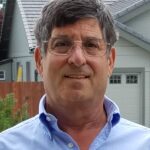OPINION: A majority of voters have no voice as filing for 2024 elections completed

Filing for 2024 non-judicial races closed March 15. While most pundits will be analyzing the competitiveness of the races up and down the ballot, there are 35 partisan races where a majority of voters will have no voice.
At the end of February 2024, voters registered as nonpartisan expanded their lead as the largest voting bloc in the state. A majority of voters 18 to 35 years of age (more than 55 percent) do not belong to either the Democratic or Republican parties. And while the Republican Party has a lock on voter share in the 15 rural counties, more than one-third of rural voters are not registered to vote in either major party.
Nevada, at least for now, has closed primary elections for partisan offices. Only voters registered in the Democratic Party can vote in the Democratic primary; only voters registered in the Republican Party can vote in the Republican primary. Voters registered as nonpartisan or in a minor party cannot participate in these nominating contests.
We’ll put aside for now the fact that political parties are private organizations, that candidate nomination is an internal operation of those organizations, yet all taxpayers pay for these elections without consideration of membership in either private organization.
During the 2015 Nevada legislative session, the Legislature passed, and the governor signed SB499, stripping away the right of a majority of voters to determine who represents them in the state Legislature or on their county commission. By allowing a candidate from one political party to advance from the primary to the general election unopposed instead of having two candidates of the same party on the general election ballot for all voters to choose from, a small minority determines who represents the whole. What does that mean for the upcoming election?
In Assembly District 7, only two candidates from the Democratic Party filed. At the end of last month there were 43,813 voters, yet only 41 percent are members of the Democratic Party and thus allowed to vote in the primary; 59 percent of district voters have no voice. If we assume an average primary election turnout of 23 percent (last five statewide primary elections), a little more than 9 percent of the voters — 23 percent of the 41 percent of Democrats — will elect who represents all 43,813 voters because the winner advances to the general election unopposed.
In Senate Districts 4 and 19 a similar situation exists. In SD4, at the end of last month there were 81,119 total active voters, 44 percent of whom were registered to vote in the Democratic Party. Fifty-six percent of the voters will not be allowed to vote in the primary election that will determine who represents the entire district. The winner, similar to AD7, will win with perhaps 4 percent to 6 percent support.
In SD19, since there are just three Republican candidates in the race, the situation is worse. Fifty-four percent of the active voters in the district are not Republican and thus will have no say in who represents them in Carson City. Ten percent of voters who can be expected to participate will determine who goes to Carson City to represent all 88,000 voters, perhaps with the support of 5 percent of the total district.
In addition to the three races outlined above, there are 15 county commission races in 12 of the rural counties where all candidates are members of the Republican Party. Even though the Republican Party is the dominant party and turnout runs higher, a sizable number of voters will not be allowed to cast ballots in those races.
Races where only one candidate has filed to run pose a different, though related, problem. There are 17 such races in this election, seven in the Legislature and 10 in the rural counties. The problem is one of voters not having a choice.
Concerning the legislative races, in only one district, AD33, does the party with the candidate (Republican) have a majority voter share. In three of the remaining six, the share of voters not registered to vote in either major party is the leading share and in one, those registered as nonpartisan hold the leading share. Where is the disincentive to run? Is it possible party leadership wants to limit voter choice in favor of a preferred candidate?
Voters being systemically prevented from participating or having their choices limited because of political expediency should not be considered normal or be accepted. Candidates winning in the primary when turnout is far below that in the general election should be unacceptable. Candidates elected under these circumstances being able to state they represent their districts is a gross misrepresentation.
Doug Goodman is the founder and executive director of Nevadans for Election Reform and is supporting the Yes on 3 effort.
The Nevada Independent welcomes informed, cogent rebuttals to opinion pieces such as this. Send them to [email protected].
